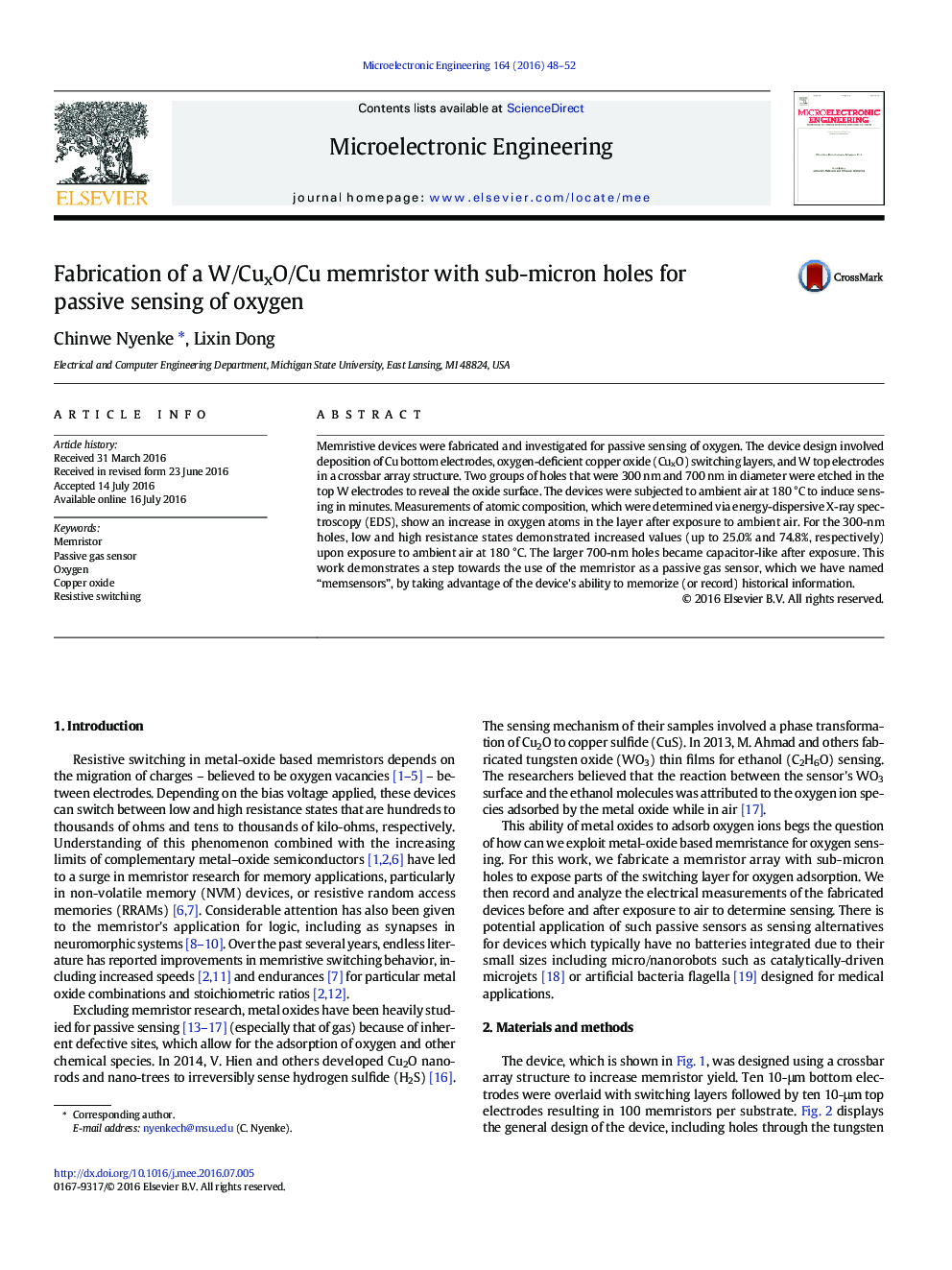| Article ID | Journal | Published Year | Pages | File Type |
|---|---|---|---|---|
| 538860 | Microelectronic Engineering | 2016 | 5 Pages |
•A memristor array with sub-micron holes was fabricated to allow exposure of the switching layer.•The feasibility of using this perforated memristor structure for oxygen sensing is demonstrated.•The mechanism by which this sensing occurred is believed to be the filling of vacancy sites within the switching layer by adsorbed oxygen.
Memristive devices were fabricated and investigated for passive sensing of oxygen. The device design involved deposition of Cu bottom electrodes, oxygen-deficient copper oxide (CuxO) switching layers, and W top electrodes in a crossbar array structure. Two groups of holes that were 300 nm and 700 nm in diameter were etched in the top W electrodes to reveal the oxide surface. The devices were subjected to ambient air at 180 °C to induce sensing in minutes. Measurements of atomic composition, which were determined via energy-dispersive X-ray spectroscopy (EDS), show an increase in oxygen atoms in the layer after exposure to ambient air. For the 300-nm holes, low and high resistance states demonstrated increased values (up to 25.0% and 74.8%, respectively) upon exposure to ambient air at 180 °C. The larger 700-nm holes became capacitor-like after exposure. This work demonstrates a step towards the use of the memristor as a passive gas sensor, which we have named “memsensors”, by taking advantage of the device's ability to memorize (or record) historical information.
Graphical abstractSchematic of adsorption and vacancy filling. (a) Oxygen molecules from the ambient air result in adsorbed oxygen ions and holes near the CuxO surface. (b) Over time, the adsorbed ions fill oxygen vacancies within the layer. (c) The memristor now has higher resistance states due to fewer vacancies.Figure optionsDownload full-size imageDownload as PowerPoint slide
